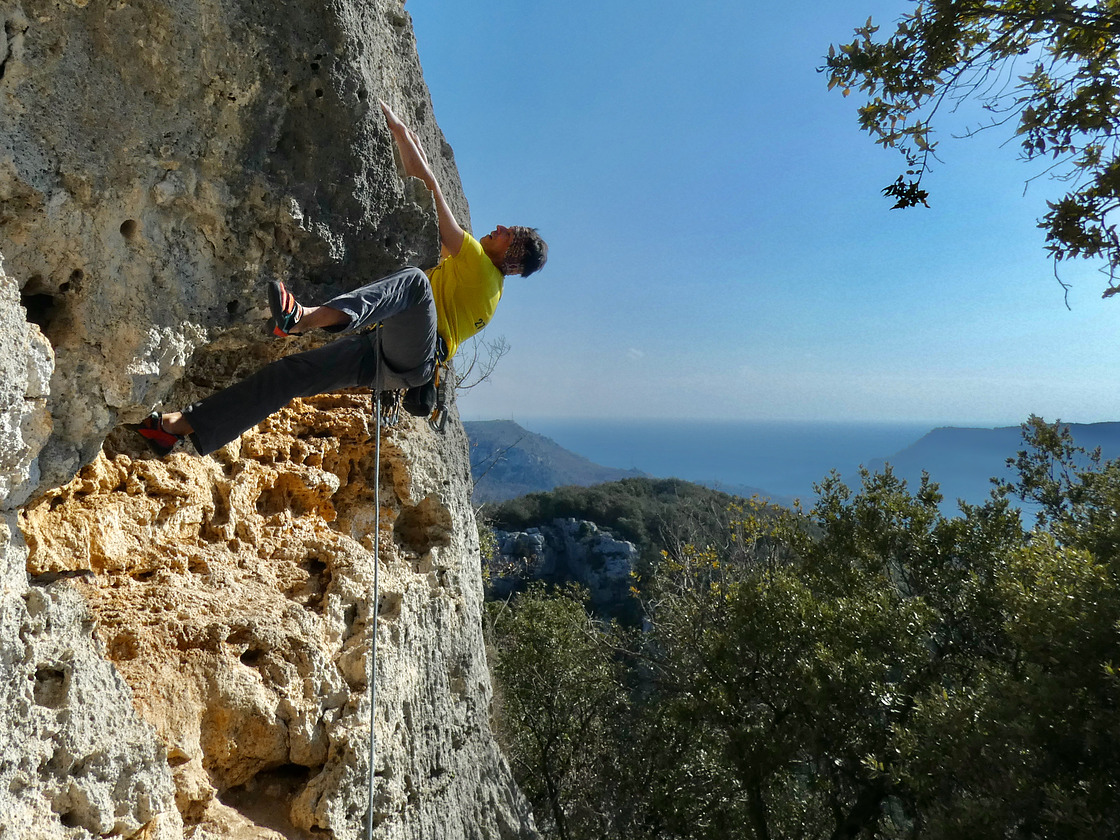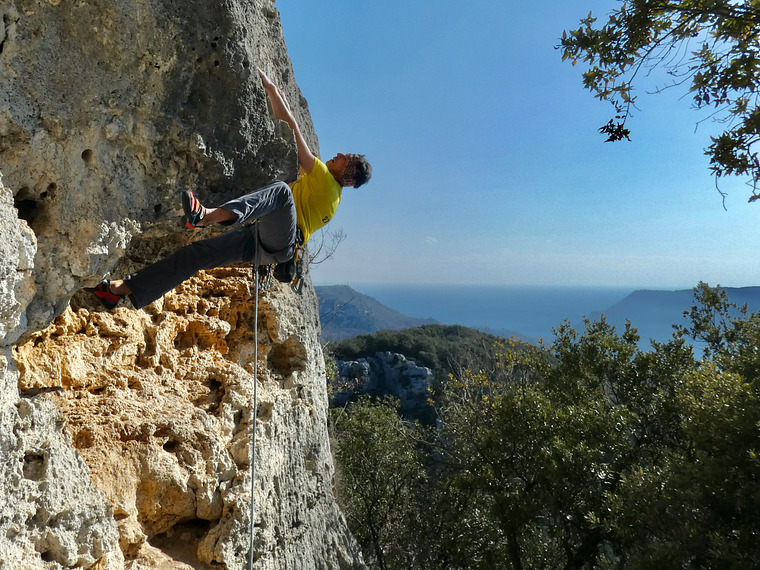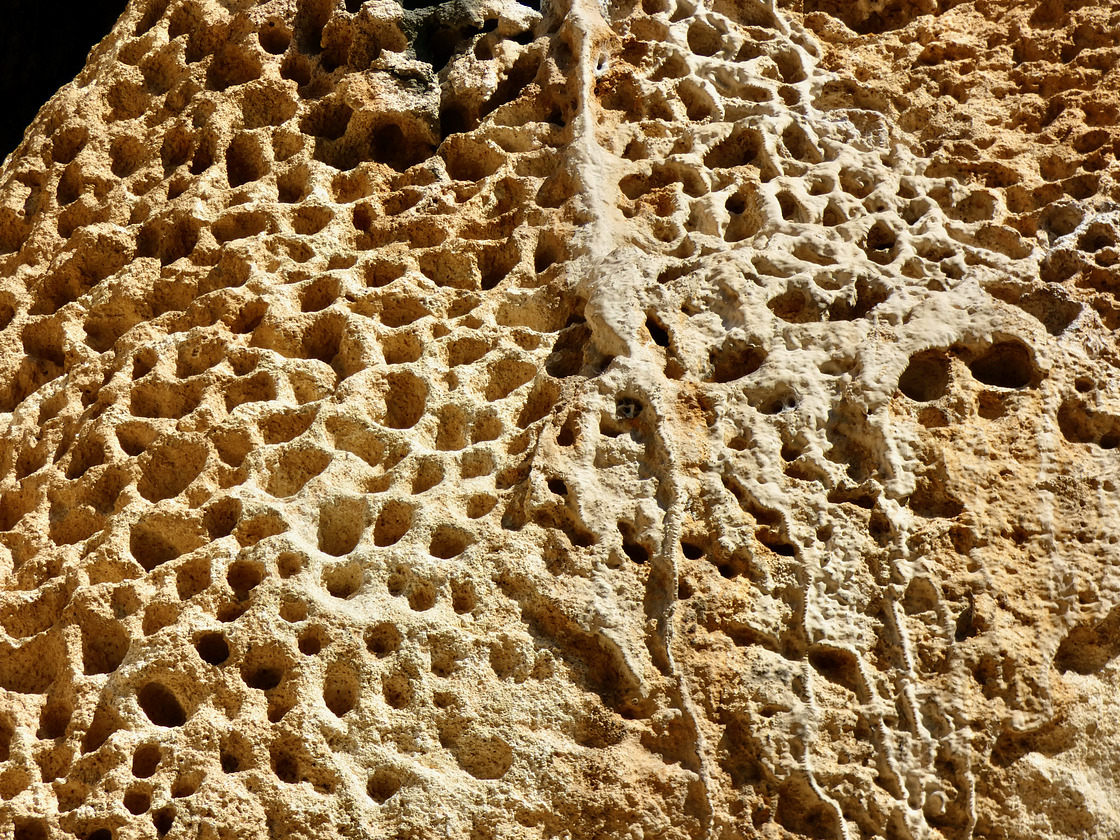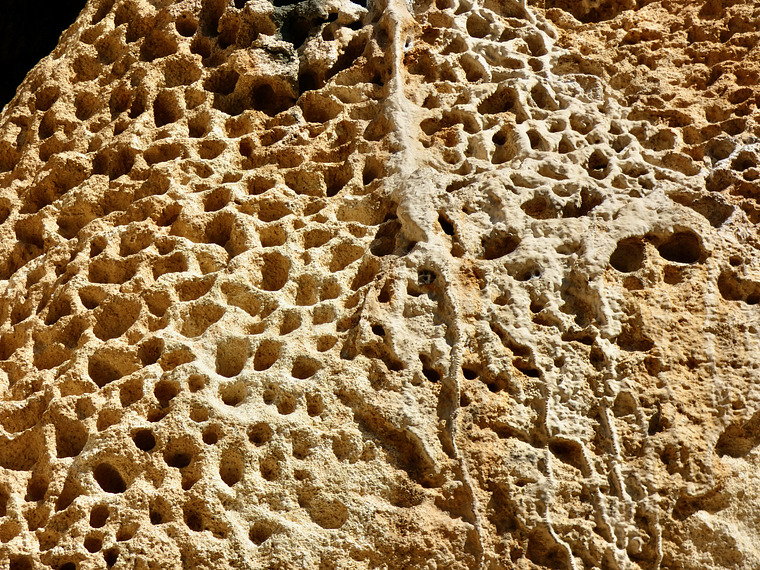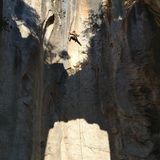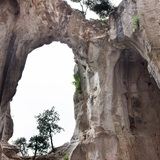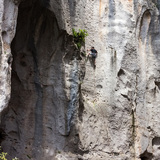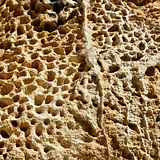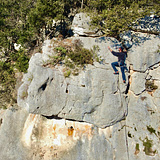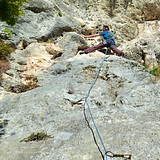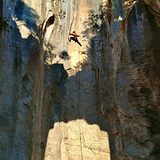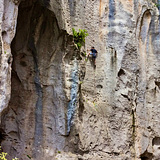🚶♂️ 15-35' - ⛰️ 220-335 MSL - 🧭 W / SW - ☀️ Almost all the sectors from mid-morning onwards
Monte sordo topo is a great collection of the sport climbing sectors spreaded in the South and West sides of the Rocca Carpanea peak. This ridge has a North-South orientation and is characterized by steep cliffs typical of the Finale valleys.
Monte Sordo groups over 400 lines, ranging from 5 to 8b. Most of the routes are around the sixth grade.
All the sectors have the classic great limestone rock of Finale, having as main feature those amazing pockets. Climbing is generally really technical on slabs and vertical walls. Having good balance and a fair amount of finger strength pays off here.
The area is highly frequented during the Winter season due to the generally warm temperatures, but, thanks to the high variety of the sectors, the period with good conditions can be extended also to Spring and Autumn.
The approaches can be quite confusing, since the area has an extended network of paths. For this reason we reported a main ring path that leads to all the sectors. We suggest turning on the GPS and following this road as much as possible.
Nowadays the valley of Contrada Valle has limited access to the cars, since the narrow roads and the jams could obstruct the emergency services. For these reasons, the only available car parks are the ones reported in this topo. We kindly ask to respect this restriction. This fact lengthened the approach time to the sectors, but the area is so beautiful that we are sure you will not complain.
Ok let's focus now a bit on the sectors' collection.
3’ Livello is the first on the list and has a challenging approach. Has a tens of lines from 5+ to 7b and is rarely frequented.
Falesia del Kaimano is a beautiful sector having 26 routes mainly around the 6th grade. Climbing is varied on a good quality rock. Approach is not recommended for children.
Placca delle case valle is one of the closest sectors. It has gray slabs and vertical walls with West exposition. 16 routes with difficulties from 6a to 7a.
Antri rossi is a winter sector with South/East exposure. It has a beautiful landscape over Finalborgo and the sea. The climbing on its 18 routes is various on dihedrals, edges, vertical walls and roofs. 5+ to 7a lines.
Bric Scimarco Superiore and Inferiore are two large sectors and are some of the best areas of Finale. They have both East expositions. Of the two, Bric Scimarco Superiore is the most interesting, having a crazy quality rock and 40+ lines from 6a up to 7c and really safe protections. Here the climbing is really fingery and technical. Bric Scimarco Inferiore has a little more history behind it. It collects 20+ routes that are a bit easier than those of its brother.
Grotta di Sant’Antonino is a huge cave that still has further development potential. There are overhanging lines ranging around the 6th and 7th grade. Exposition is North.
Rovine is a small sector of a tens of overhanging lines.
Zambaland has 14 routes from 6a to 7b+ and a hard 8b. Climbing requires good finger strength on pockets.
Parete dimenticata is a highly frequented West wall. 50 routes from 5+ to 8b, featuring the classic vertical fingery walls of FInale but also some steep overhangs.
What to say about Grotta dell’edera? Well, it is probably the most famous climbing sector of the whole Finale! This amazing cylindrical cave offers an unique environment and it must be visited, even if you are not interested in climbing. The 20 routes are spreaded all around the cave, on vertical and overhanging faces. Difficulties ranges from 6b to 8a. The sun enters the cave from its window only in the afternoon, but we do not suggest coming here during Summer since there is never wind and it will be too hot. The cave has two entrances: it is possible to enter from above by rappelling down from the window or by below by entering the cave in the middle of Parete dimenticata sector. This last option is quite adventurous, since it consists in a climb on a slippery and wet ramp with fixed ropes and then an exit through a narrow hole in the cave roof (something less than 1 meter in diameter). The cave is really dark, so take a headlamp.
Placca d’angolo is a slab connecting Parete dimenticata and Lo specchio. 5 fingery and technical lines.
Lo specchio is located in a beautiful environment and features vertical and overhanging walls. The beautiful 24 routes are long up to 30 meters, going from 6a to 7b.
I coralli is a small sector just under Monte sordo, with short and fingery routes in the 6th range.
Monte sordo sector is probably the most frequented one, turning out to be a bit polished. West exposure, good winter conditions. It consists of a vertical technical rock rampart with 60 routes from 5+ to 7c+.
La Boulangerie is a vertical wall with great rock with 7 routes and 1 overhanging. Difficulties from 6b to 7b.
La Gourmanderie has 4 lines with steep overhangs. Mò num pa tropì, 8b+ is one of the hardest route in this topo.
Falesia della Lumaca is a slab with big holds and some overhanging starts. Good protections on all the 8 lines (5+/6a).
Pilastro di Mu has easy multi-pitch routes on slabs with cracks. It is good for beginners. To come back to the base it is suggested to rappel down.
Placca di Mu requires extreme adherence on micro holds, turning out to be a really technical slab. 8 routes from 6b to 7a.
Alveare is another iconic sector of Finale, with its crazy pocketed walls resembling a beehive. Really good on cold winters. The 13 routes generally have overhanging starts, then become really technical. The most famous and historical routes are Hyaena and Viaggio nel futuro, hard test pieces. Difficulty from 6b up to 8c+ with route Dingo, the hardest of Monte sordo.
La scaletta is a small sector with 8 routes inside a rocky cave. A good amount of power is required to face these overhangs. 6b to 7b.
Lo scorpione, with its South / South West exposition is a nice winter crag. Slab routes, comfortable base and good rock. Close and safe protections and easy grades make this sector one of the easiest of the topo. 12 lines from 5 to 6b.
Le tecchie has good protections on fingery vertical walls or slabs. But there are even some steep overhangs inside of a suggestive cave. It is highly frequented, thanks to the wide range of grades from 5 to 8b of the 32 routes.
Pilastro Mirovino is a good quality rock pillar, with 13 routes from 5+ to 6c. Climbing is generally technical on vertical walls with small crimps. There are some starts inside a small cave.
Grotta della pollera has only two roof climbing lines, harder than 8a, inside the Arma Pollera cave. Moisture is often a problem here.
Avatar has few easy and long lines (5+/6b). Climbing is varied on slabs, vertical walls and small roofs. The rock is really good.
Finally, Scoglio di Avalon is small but has a tens of interesting lines on gray pillars with good rock. Difficulties around 5 to 6b.
If you get enough information on the Monte sordo topo you can easily stop here, but we would like to add some extra notes to describe generally the amazing area of Finale Ligure.
Finale Ligure is known all over the world as one of the best areas for the outdoor sport. Climbing here is amazing, thanks to the infinite number of crags, thousands of lines and the mild climate which allows the practice of this sport all year round.
History of climbing has been written on these vertiginous walls with sea view, smooth slabs and overhangs always of excellent limestone with pockets. Slabs are unforgiving and extremely fingery, but they will make you rediscover the pure essence of climbing.
The area also offers beautiful trekkings, mountain bike trails and lovely sea shores.
Finale is extremely important from a naturalistic point of view due to the great variety of natural environments which has allowed the conservation of a high biodiversity, with an abundance of rare and exclusive animal and plant species. The area is karstic and generally is covered by vegetation, made up of Mediterranean scrub, holm oak woods and meadow areas.
We have a great diffusion of birds of prey that nest in the cliffs.Some areas are closed to encourage this nesting, so please respect this constraint and live in balance with this unique environment.
Finale’s municipality has prohibited the free camping. We suggest you go to the campsites, especially during the high season.
